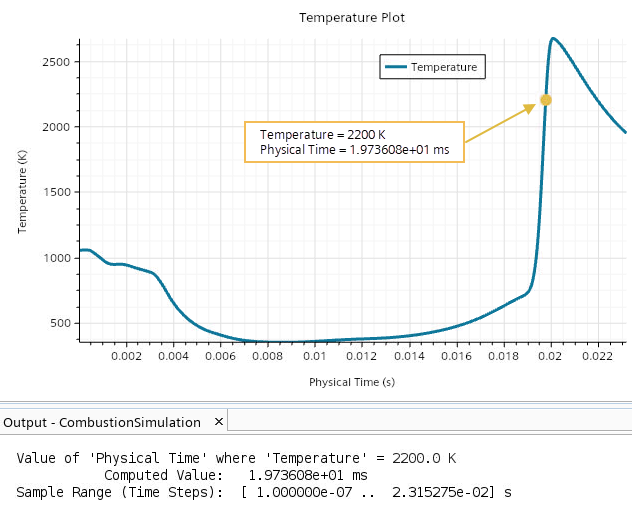Two Monitor Co-temporal Lookup Report
The two monitor co-temporal lookup report searches for a specified lookup value in a source monitor, finds its first position, and returns the value of a co-temporal monitor at that position. Linear interpolation is used if the location falls between two monitor samples.
Two Monitor Co-temporal Lookup Report Properties
- Units
- The units of the resulting report value (in the dimensions of the co-temporal monitor).
- Lookup Value
- The value to search for in the source monitor (in the dimensions of the source monitor).
- Source Monitor
- The monitor in which to search for the lookup value.
- Co-temporal Monitor
- The monitor from which to extract a value.
- Sample collection policy
- Specifies whether the report is on all samples or the last N samples, where N is specified in the Last N Samples child node.
| 注 | Currently, you cannot use monitors of statistical reports as source or co-temporal monitors. |
Child Node Properties
The two monitor co-temporal lookup report node has a child node named either All samples or Last N Samples, depending on the selection made under Sample collection policy.
- Sample count
- The number of data samples N collected for each cell within the monitor. For the Last N Samples node only. For multiple inputs, the report collects enough samples from the input monitors so that there are N iterations in common across all of them. The report then runs on these N common iterations.
- Sample start event
- The event at which to begin collecting data. See User-Defined Update Events.
- Include start event sample
- When On, includes the sample at a start event in the sample collection.
Example
Assume the following two monitor co-temporal lookup report:
| Two Monitor Co-temporal Lookup Report | |
|---|---|
| Units | ms |
| Lookup Value | 2200.0 K |
| Source Monitor | Temperature |
| Co-temporal Monitor | Physical Time |
| Sample collection policy | All Samples |
